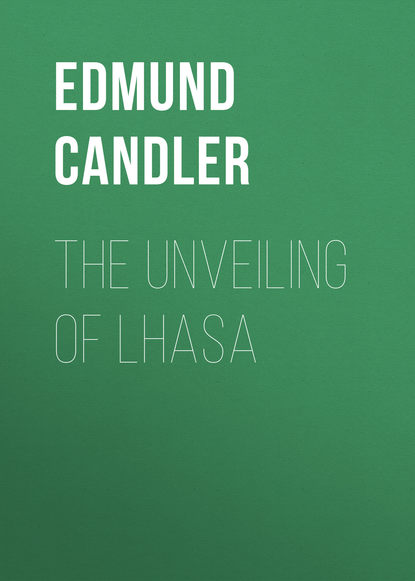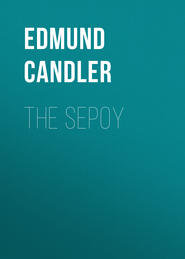По всем вопросам обращайтесь на: info@litportal.ru
(©) 2003-2024.
✖
The Unveiling of Lhasa
Настройки чтения
Размер шрифта
Высота строк
Поля
notes
1
Friar Oderic of Portenone is supposed to have visited Lhasa in 1325, but the authenticity of this record is open to doubt.
2
When in Lhasa I sought in vain for any trace of these buildings. The most enlightened Tibetans are ignorant, or pretend to be so, that Christian missionaries have resided in the city. In the cathedral, however, we found a bell with the inscription, 'TE DEUM LAUDAMUS,' which is probably a relic of the Capuchins.
3
Suspicion and jealousy of foreigners seems to have been the guiding principle both of Tibetans and Chinese even in the earlier history of the country. The attitude is well illustrated by a letter written in 1774 by the Regent at Lhasa to the Teshu Lama with reference to Bogle's mission: 'He had heard of two Fringies being arrived in the Deb Raja's dominions, with a great retinue of servants; that the Fringies were fond of war, and after insinuating themselves into a country raised disturbances and made themselves masters of it; that as no Fringies had ever been admitted into Tibet, he advised the Lama to find some method of sending them back, either on account of the violence of the small-pox or on any other pretence.'
4
The Shata Shapé and his three colleagues were deposed by the Dalai Lama in October, 1903.
5
A previous mission had been received by the Czar at Livadia in October, 1900.
6
Their attitude was thus summed up by Captain O'Connor, secretary to the mission: 'We cannot accept letters; we cannot write letters; we cannot let you into our zone; we cannot let you travel; we cannot discuss matters, because this is not the proper place; go back to Giogong and send away all your soldiers, and we will come to an agreement' (Tibetan Blue-Book).
7
The situation was thus eloquently summarized by the Government of India in a despatch to Mr. Brodrick, November 5, 1903: 'It is not possible that the Tibet Government should be allowed to ignore its treaty obligations, thwart trade, encroach upon our territory, destroy our boundary pillars, and refuse even to receive our communications. Still less do we think that when an amicable conference has been arranged for the settlement of these difficulties we should acquiesce in our mission being boycotted by the very persons who have been deputed to meet it, our officers insulted, our subjects arrested and ill-used, and our authority despised by a petty Power which only mistakes our forbearance for weakness, and which thinks that by an attitude of obstinate inertia it can once again compel us, as it has done in the past, to desist from our intentions.'
8
Sheepskin.
9
The only articles imported to the value of £1,000 are cotton goods, woollen cloths, metals, chinaware, coral, indigo, maize, silk, fur, and tobacco.
The only exports to the value of £1,000 are musk, ponies, skins, wool, and yaks'-tails.
Appended are the returns for the years 1895-1902:
Customs House Returns, Yatung.
10
Between Gnatong and Gautsa, thirteen different species of primulas are found. They are: Primula Petiolaris, P. glabra, P. Sapphirina, P. pusilia, P. Kingii, P. Elwesiana, P. Capitata, P. Sikkimensis, P. Involucra, P. Denticulata, P. Stuartii, P. Soldanelloides, P. Stirtonia.
11
The species are: Rhododendron campanulatum, purple flowers; R. Fulgens, scarlet; R. Hodgsonii, rose-coloured; R. Anthopogon, white; R. Virgatum, purple; R. Nivale, rose-red; R. Wightii, yellow; R. Falconeri, cream-coloured; R. cinndbarinum, brick-red ('The Gates of Tibet,' Appendix I., J. A. H. Louis).
12
When Colonel Bromhead pursued a Tibetan unarmed. Called upon to surrender, the Tibetan turned on Colonel Bromhead, cut off his right arm, and badly mutilated the left.
13
The reports sent home at the time of the Hot Springs affair were inaccurate as to the manner in which I was wounded, and also Major Wallace Dunlop, who was the only European anywhere near me at the time. Major Dunlop shot his own man, but at such close quarters that the Tibetan's sword slipped down the barrel of his rifle and cut off two fingers of his left hand. General Macdonald and Captain Bignell, who shot several men with their revolvers, were standing at the corner where the wall joined the ruined house, and did not see the attack on myself and Dunlop.
14
Companies of Pathans and Gurkhas were left to garrison Ralung, Nagartse, Pehte, Chaksam, and Toilung Bridge.
15
Waddell, 'Lamaism in Tibet,' p. 200.
16
Ibid., p. 409.
17
The only expedition sanctioned is that which is now exploring the little-known trade route between Gyantse and Gartok, where a mart has been opened to us by the recent Tibetan treaty. The party consists of Captain Ryder, R.E., in command, Captain Wood, R.E., Lieutenant Bailey, of the 32nd Pioneers, and six picked men of the 8th Gurkhas. They follow the main feeder of the Tsangpo nearly 500 miles, then strike into the high lacustrine tableland of Western Tibet, passing the great Mansarowar Lake to Gartok; thence over the Indus watershed, and down the Sutlej Valley to Simla, where they are expected about the end of January. The party will be able to collect useful information about the trade resources of the country; but the route has already been mapped by Nain Singh, the Indian surveyor, and the geographical results of the expedition will be small compared with what would have been derived from the projected Tengri Nor and Brahmaputra trips.
18
It is interesting to compare Grueber's account with the journal of Father Rubruquis, who travelled in Mongolia in the thirteenth century. In 1253 he wrote of the Lamas:
'All their priests had their heads shaven quite over, and they are clad in saffron-coloured garments. Being once shaven, they lead an unmarried life from that time forward, and they live a hundred or two of them in one cloister… They have with them also, whithersoever they go, a certain string, with a hundred or two hundred nutshells thereupon, much like our beads which we carry about with us; and they do always mutter these words, "Om mani pectavi (om mani padme hom)" – "God, Thou knowest," as one of them expounded it to me; and so often do they expect a reward at God's hands as they pronounce these words in remembrance of God… I made a visit to their idol temple, and found certain priests sitting in the outward portico, and those which I saw seemed, by their shaven beards, as if they had been our countrymen; they wore certain ornaments upon their heads like mitres made of paper.'
19
'It may be asked how the monastic influence is brought to bear on a Government in which three out of the four principal Ministers (Shapé) are laymen. The fact seems to be that lying behind the Tak Lama, the Shapés, and all the machinery of the Tibetan Government, as we have hitherto been acquainted with it, there is an institution called the "Tsong-du-chembo," or "Tsong-dugze-tsom," which may reasonably be compared with what we call a "National Assembly," or, as the word implies, "Great Assembly." It is constituted of the Kenpas or Abbots of the three great monasteries, representatives from the four lings or small monasteries actually in Lhasa city, and from all the other monasteries in the province of U; and besides this, all the officials of the Government are present – laymen and ecclesiastics alike – to the number of several hundreds.' – Captain O'Connor's Diary at Khamba Jong (Tibetan Blue-Book, 1904).
20
I have derived most of my information regarding the discipline and constitution of Depung from 'Lamaism in Tibet,' by Colonel Augustine Waddell, who accompanied the expedition as Archæologist and Principal Medical Officer.
21
The highest degree which is conferred on the Lamas by their Universities is the Rabs-jam-pa (verbally overflowing endlessly). – Waddell, 'Lamaism in Tibet.'
22
The liberation of the Lachung men and the destruction of the Yatung and Gob-sorg barriers.
23
Другие электронные книги автора Edmund Candler
The Sepoy




 4.67
4.67






